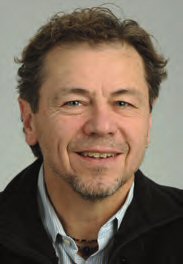
SEJ President’s Report
By DON HOPEY
I recently went to see the movie “Gravity,” the blockbuster Sandra Bullock-George Clooney vehicle that demonstrates in 3-D the isolation of outer space and the value of a strong tether. And it got me thinking about our organization, the Society of Environmental Journalists, and its members.
Like the astronauts in the film, it seems more and more that we reporters are out there all alone – a journalistic generation lost in space.
Some of our older brethren managed to weather corporate media retrenchments, only to be wiped out by the jagged shards of an unforgiving technology explosion. Those of us who are left face increasingly complex environmental issues and aggressive corporate and government media minders trying to spin us head over heels.
And beginning journalists must confront a future that, while exciting and full of possibilities, is also so uncertain that a recent Yahoo column based on U.S. Department of Labor statistics predicts our ranks will continue to thin, from 51,900 jobs in 2010 to 48,000 in 2020, a decline of 8 percent.
Over time, SEJ has become, more and more, an organization dominated by freelancers, a romantically descriptive term that fails to convey the isolation, work and hard-won skills needed to both report and sell environment-related stories. Even those of us still lucky enough to have full-time gigs in traditional print and electronic media must more often than not deal with editors who seem to recognize the importance of what we do only in terms of being thankful that they don’t have to find someone else to do it.
And we are doing good work – both on our jobs and in our organization.
SEJ’s Awards program attracted stronger-than-ever entries this year and, despite the federal government shutdown, SEJ staff and local co-chairs Anne Paine, recently retired from The Tennessean in Nashville; David Sachsman, West Chair in Communication and Public Affairs, University of Tennessee at Chattanooga; and Pam Sohn, environment reporter, Chattanooga Times Free Press; put on a great conference in Chattanooga, with rave reviews and compelling stories from many of the more than 550 attendees to prove it.
Among the dozens of workshops, field trips, plenaries, lunch-table discussions and concurrent sessions offered over five days, SEJ conference-goers got to snorkel with endangered darters, drive the latest electric cars, discuss sustainability, fracking and energy development, see a demonstration of flying drones used for journalism, and visit Oak Ridge, where the Manhattan Project that yielded nuclear bombs and power was developed and where today exists a world-class research center focused on climate change.
And this year we’ve got another great conference set for Sept.3-7 in New Orleans, with award-winning environment reporter Mark Schleifstein, of NOLA.com/The Times-Picayune, at the helm. Under the theme of risk, resilience and restoration, we’ll explore environmental issues in the post-BP spill Gulf of Mexico, on the Mississippi River and in post-Katrina New Orleans that should be a big attraction for journalists.
But Houston, we’ve got a problem. SEJ membership numbers have plateaued around 1,500 but are recently trending downward. We need to reverse that trend. We need to make 2014 the year we bump up our membership numbers to a higher orbit.
There are many areas and opportunities where such efforts can be successful.
A number of former members have allowed their SEJ memberships to lapse, some because they’ve left this journalistically inhospitable Daily Planet but others just because they forgot to renew or forgot what a lifeline SEJ can be. We will redouble efforts to pull them back in.
We can also target new media outlets where journalists are covering the environment but don’t know about SEJ, and show them how the group’s links, contacts, expertise and support can benefit their reporting. We know too that SEJ is an untapped resource for general assignment reporters who aren’t assigned exclusively to the environment beat but regularly do stories on energy, health and science topics with major environment components.
We can push regional meetups, which have already reached a new level since SEJ members across the country have begun stepping up to lead social events in their area. SEJ board member Emily Gertz started the New York City-area meetup group almost two years ago, for instance, and has been providing valuable insights and mentoring for the program.
And we need to pursue alliances with other journalism organizations that can promote SEJ membership.
Finally, we need to redouble efforts to recruit new student members. They can benefit from our professional experience; we can gain from their vigor and inventiveness.
In the coming months, my hope is that SEJ’s board will formulate plans and provide leadership on a variety of membership initiatives. Those efforts will benefit from the involvement and ingenuity of all of our members. All of us know friends and colleagues who we can introduce to SEJ. We’ve got a great conference site to sell this year in NOLA and timely and topical and important issues to discuss. We all know non-members who we can invite to be part of those conversations.
Now is the time to strengthen the tethers and bring everyone back home.
To paraphrase Matt Kowalski, the George Clooney character in “Gravity,” “I’ve got a good feeling about this mission.”
Don Hopey covers environment at the Pittsburgh Post-Gazette, and teaches at the University of Pittsburgh and the Pitt Honors College Yellowstone Field Course.
* From the quarterly newsletter SEJournal, Winter 2014. Each new issue of SEJournal is available to members and subscribers only; find subscription information here or learn how to join SEJ. Past issues are archived for the public here.












 Advertisement
Advertisement 



